The all new B9 generation of the Audi S4/S5 is going to hit the market very soon. Compared to the last generation (B8), besides enhancements to the platform/body structure, one major change is decommission of the firm’s aging supercharged V6, which is replaced by a brand new turbocharged V6.
This new V6 is fundamentally different than its predecessor (the supercharged V6). Audi has not reveal too much detail about this new engine, however we are able to extract some useful technical information from a recent officially published video. Below are some brief analysis.
Major Changes and Highlights
- Reverse flow header (which makes using twin-scroll turbocharger possible)
- Integrated exhaust manifold into the header
- Cast-in iron cylinder liner (not Alusil in the old supercharged V6)
- Direct injection system changed to spray-guided type (Audi has been using air-guided type previously)
- Single turbocharger with twin-scroll design
- Introduced Miller cycle (a.k.a Atkinson cycle) in its operation
- Air-to-air intercooler
- Modified version to be used in 2017 Porsche Panamera V6 trim
Specifications
- Bore pitch/spacing: 93 mm
- Displacement: 2,995 cc
- 354 hp, 369 lb-ft (500 Nm) @ 1,300-4,500 RPM
Below are more detailed analysis.
Cylinder Block
The below image indicates the new turbo V6 is still using the closed-deck design, same as the previous supercharged V6:
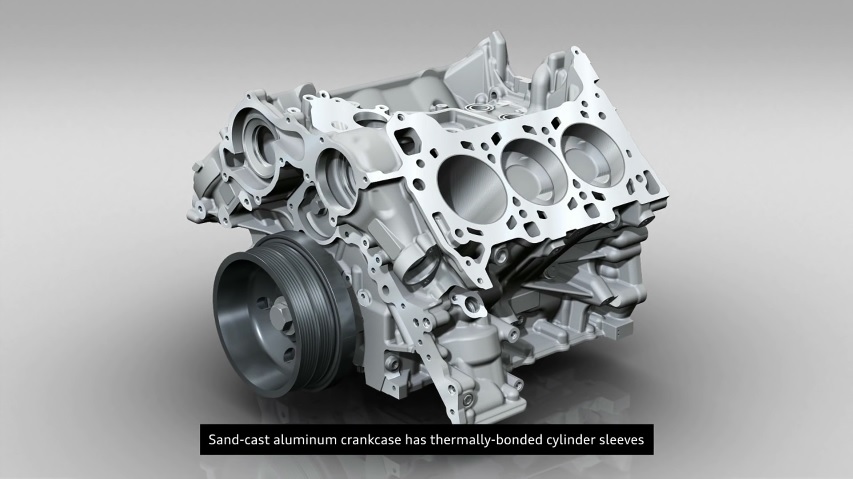
One major change is the cylinder sleeve. On the new V6, Audi is using cast iron cylinder sleeve, totally different than the old supercharged V6, which is using the Alusil layer. The indication here is: if you have experienced excessive engine oil consumption on the B8 S4/S5, you probably should not worry this on the all-new B9 S4/S5.
Due to the lightweight design principle, the new V6 only weights at 172 kg, a significant decrease from the predecessor’s 189 kg.
Due to the V6’s 90-degree bank angle, it will naturally require uneven firing, Audi uses offset split crank pins to correct this. The 90-degree geometry also brings in unbalanced vibrations, so that is the reason why you can see in Audi’s design, an extra balance shaft is added on top of the crankshaft, as shown in the below illustration.
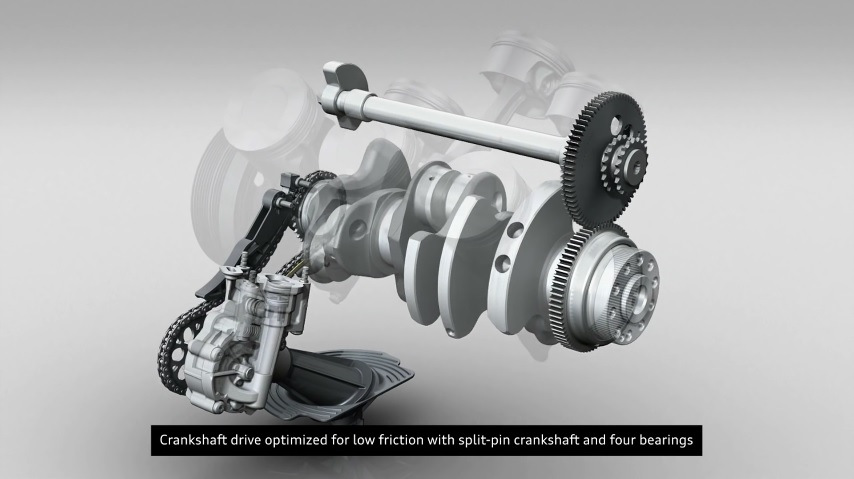
Reverse Flow Header
This can be considered the biggest innovation in this V6 engine, and it is also the first (and only) modern turbo V6 that uses the reverse flow design.
Here Reverse Flow means the exhaust manifold is on top, and the intake is on the side. The reason that Audi chooses such scheme is in order to adopt the twin-scroll turbocharger for the V6 engine, without complex pipping and routing.
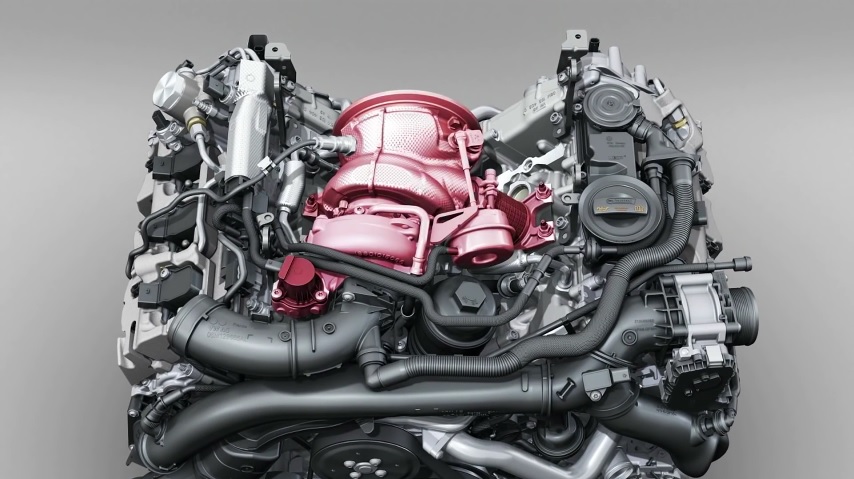
Such design also minimizes the path length that exhaust gases need to travel to reach the turbocharger, which means better throttle response and less lag.
Turbocharger: Why No Twin-Turbo Units?
For a twin single-scroll chargers design, its benefit is: boost can still be kept strong for high RPM workload, which helps the engine to reach a very high peak output; but such arrangement’s throttle response is inferior to the twin-scroll type, given similar design.
Main advantage of the single twin-scroll charger design is better throttle response in low-RPM range; drawbacks are mainly in its relatively tighter flow volume limits under high-RPM and high load situation. On S4/S5’s application this engine makes 354 hp, not high enough to justify the twin-turbo plan, so this is the reason why Audi engineer select the single twin-scroll chargers as the final solution.
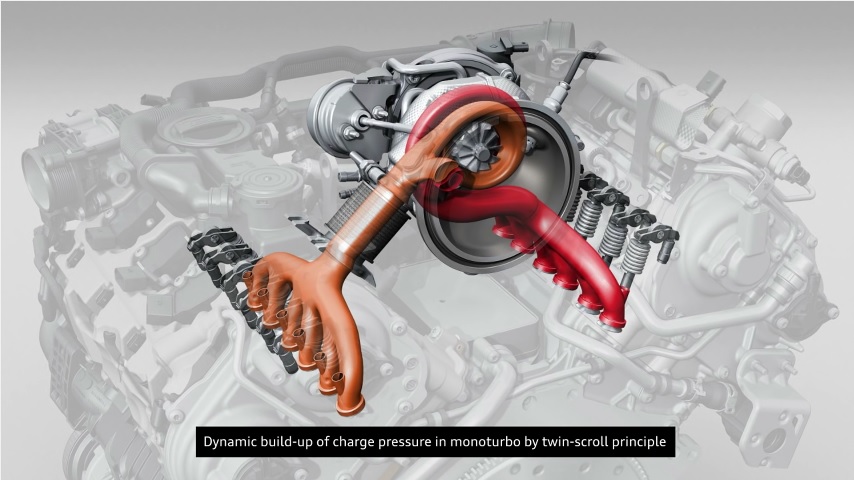
Generally speaking, for a 6-cylinder engine with around 3.0L displacements, if its application is aiming at output level around 350hp, single twin-scroll turbocharger brings more benefits than its disadvantages. This also explains why the latest BMW B58 engine also picks this route.
Direct Injection: Spray-guided v.s Air-guided
Before this new V6, air-guided direct injection is an Audi tradition. On this new V6, Audi moves the injectors to the center top location of the cylinder, makes it a typical spray-guided design. The reason behind this may be: 1. packaging considerations due to the reverse flow header design; 2. spray-guided can achieve better efficiency.
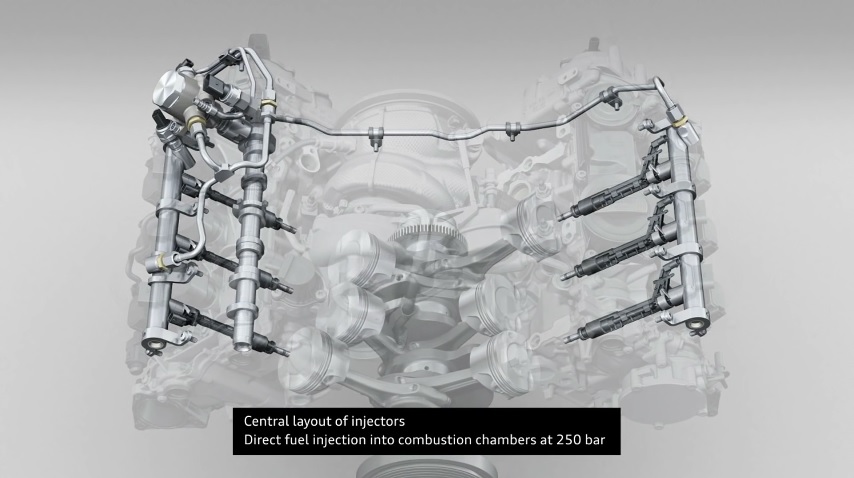
Valvetrain: Miller Cycle
Audi officially says the V6’s valvetrain has two-stage control, in fact this means when under medium or light load, the engine will switch to the Miller cycle mode. If you are unfamiliar with this terminology, you must have already known the Atkinson cycle, which is made famous by Toyota. Here, Miller cycle and Atkinson cycle means the same thing.

It is worth noting that, not only this turbo V6, but also the latest EA888 engine incorporates this Miller cycle mode in various VW/Audi cars.
Heat Management
There are separate coolant paths in the engine’s crankcase and cylinder head.
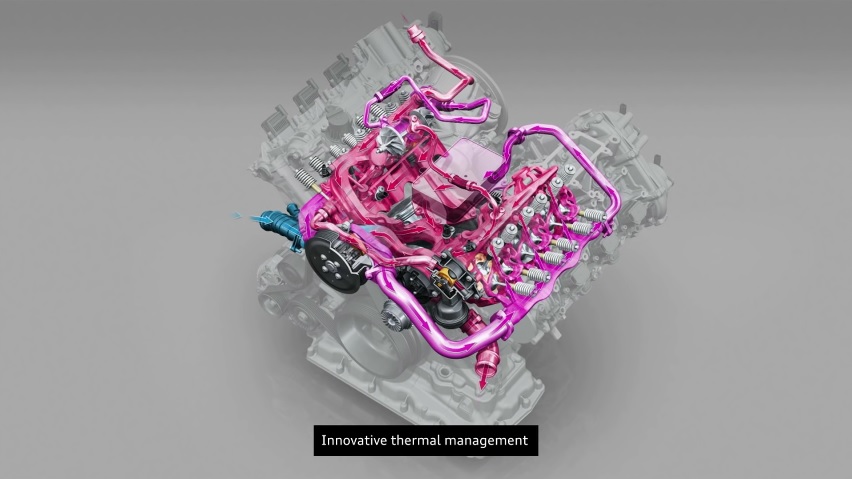
Due to the center of the V bank valley is occupied by the turbocharger, which is a preferable mouting location if it wants to use the air-to-liquid type; on the other hand, relocate an air-to-liquid intercooler to other places of the engine is not beneficial too. Therefore the packaging constraint prompts Audi to use the air-to-air type intercooler, as you can see in the below picture.
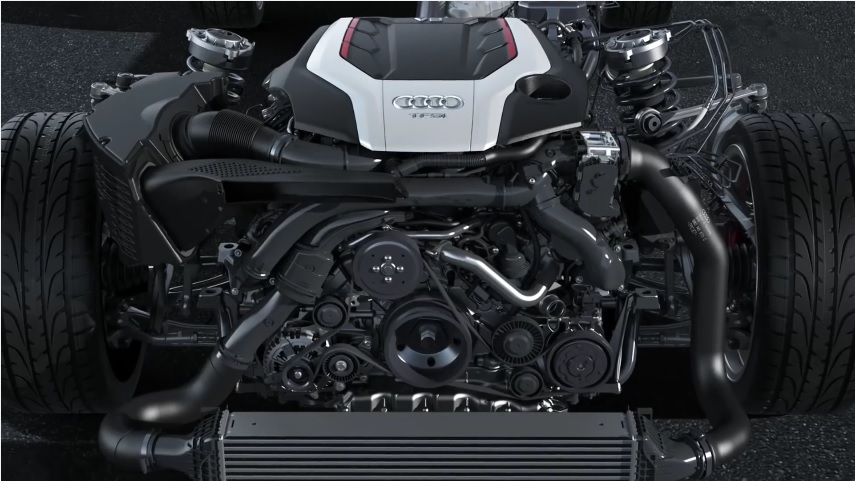
From this angle you can see the engine is a tight fit into the S4/S5’s engine compartment, there is no enough space to put any other major large components on the side of the V banks. The intercooler has to be in front of the engine.
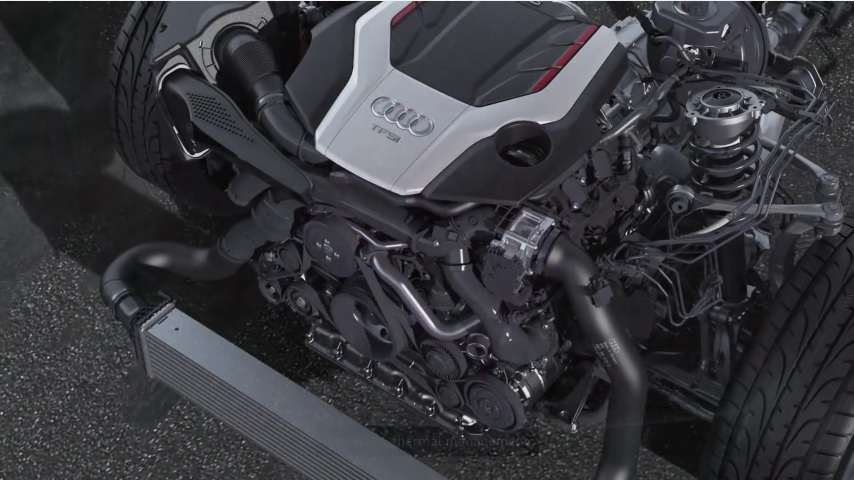
Summary
Co-developed with Porsche, this new turbo V6 has the same advance level as BMW’s B58 engine (see our review here).
Compared to its predecessor (the 3.0L supercharged V6), the new V6 is much lighter, which is critical for Audi vehicles since they are all based on the FWD layout, and puts the engine 100% ahead of the front axle. The new engine are more efficient too, due to the elimination of mechanical air compressor, and also the adoption of spray-guided direct injection.
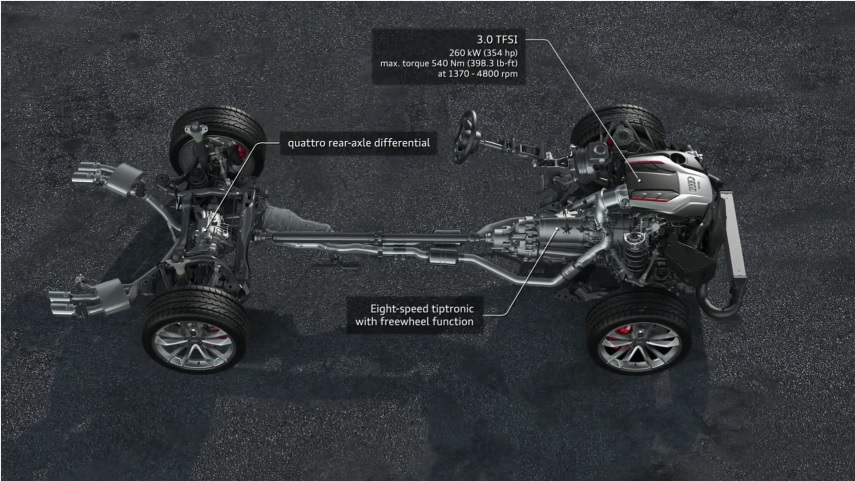
This turbo V6 will be also used in next-generation of the Porsche Panamera (starting at model year 2017). However, in Porsche’s application (and perhaps the future Audi RS4/RS5) the current cast-in iron cylinder liner will be replaced by plasma spray coating layer, for better performance.
Below are all images that are available to reveal technical details of this new V6.


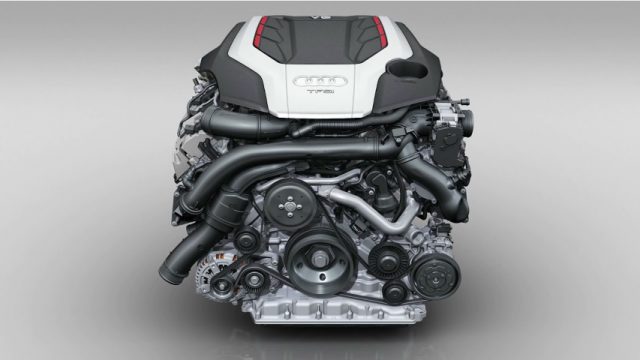


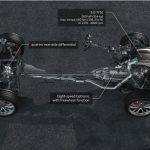
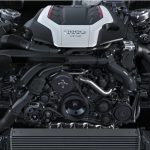
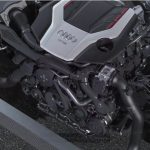
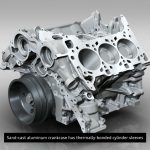
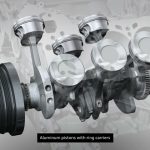
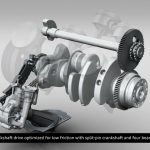
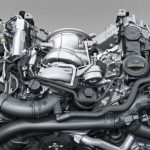
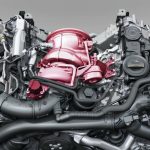
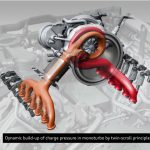
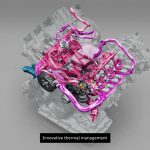
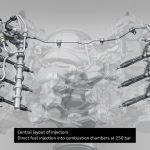
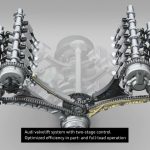
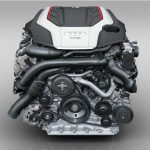
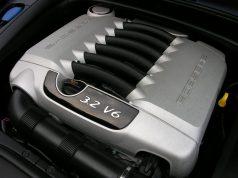

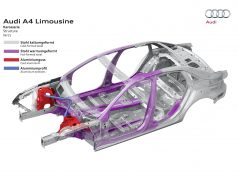
[…] who use the 2.0T as a base engine offer a V6 as an upgrade. Just take a look at Audi's new V6….. http://youwheel.com/home/2016/06/08/…3-0l-turbo-v6/ The fanboys here just love drinking the Honda 2.0T Kool-Aid. Too bad they can't see the big […]
Is the crankshaft forged?
Thanks